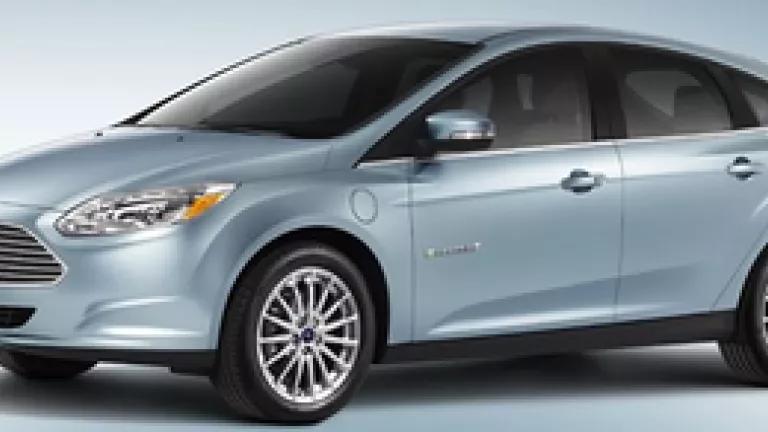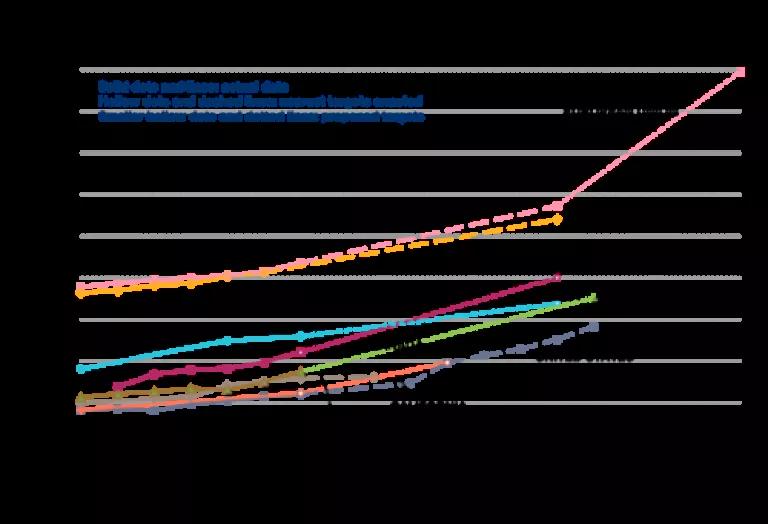
Today, the President spoke of spurring American innovation, breaking our dependence on oil, and winning the global race for jobs and industries. He reiterated the call for the U.S. to develop an industry capable of providing us with 1 million electric vehicles (EVs) by 2015. Winning the future in the global electric vehicle and battery race will be challenging, no doubt, with Asia and Europe also leading contenders. To this end, the President’s innovation agenda will include:*
New effort to support electric vehicle manufacturing and adoption in the U.S. through improved consumer rebates, investments in R&D, and competitive programs to encourage communities that invest in electric vehicle infrastructure. This builds on our ongoing efforts to reduce dependence on foreign oil through aggressive steps including strong fuel economy standards for cars and trucks and significant investments in biofuels.
This is a great start to make sure the U.S. is not left behind in the race. Here are three ideas to help turn our current foothold in this clean energy industry to a leadership one, and ultimately win this global innovation race.
1. Keep the U.S. competitive for the long-term by raising our standards to 60 mpg by 2025. The construction and expansion of nearly thirty battery and EV component manufacturing plants across the U.S. over the past two years is one of the economic bright spots in an environment where automaker plant closings have become the common theme. The Midwest is understandably attracting many of these new clean energy jobs in the still nascent EV industry.
That said, it comes as no surprise that the U.S. is now in competition with Asia and Europe for future dominance in EV and battery technologies. Foreign Policy declared this battle an “advanced battery and electric car war.” The outcome of this "war" will be determined by whether the U.S. can attract greater investments, be a net exporter of EV technology, and provide long-term certainty that an EV market will, indeed, flourish in the U.S.
How do we help ensure the U.S. is a winner? The answer is that we need to do what Europe and Asia are doing, but better, by setting long-term fuel efficiency standards demonstrating the U.S. is serious about being a leader in advanced vehicle technologies. As the graph shows below, we have some catching up to do. But the country will have an enormous opportunity to do just that over the next year as it determines where to set the next round of vehicle fuel economy and tailpipe standards for carbon pollution.

(Source: International Council on Clean Transportation)
As a report by Deutsche Bank in 2009 stated, “Europe appears poised to set standards that would be difficult to achieve without electrification.”** If the U.S. wants to consider playing in this global market, it needs to be competitive here at home first.
Simply put, why would investments in a domestic EV and battery industry continue if the major markets are not here, but in Asia and Europe? The continued growth of a domestic EV industry will ultimately depend on whether Washington gives the signal to significantly reduce our oil dependency.
2. Develop a Strategic Plan for Building U.S. Leadership in Electric Vehicles
There’s nothing like a plan to focus and organize industry, government, and stakeholder efforts. The U.S. will need to be strategic in leveraging its efforts, taking into account the current focus on deficit reduction. Washington policymakers should consider though what continued dependency on oil will mean to the economy and our ability to reduce the deficit over the long-run. As the Electrification Coalition study (2010) showed, electrification can yield significant direct benefits including fuel cost savings and job creation. Over the longer-term, these benefits result in increased household income, economic growth, reduced U.S. trade deficits, and improvements to the federal budget balance.
Not surprisingly, many states have taken a leadership role in developing strategic plans. For example, in California automakers, charging service providers, utilities, state legislators and agencies, non-governmental organizations recently collaborated to develop a state strategic plan, Taking Charge: Establishing California Leadership in the Plug-in Electric Vehicle Marketplace. (Note that NRDC participated as a member of the Collaborative).
With any new technology space, initial barriers to the market will dictate how quickly it can grow. Federal and state policies can be aligned to help support the market going forward, integrate vehicles into the grid smoothly, ensure consumer experiences are positive, lower the costs of batteries and helping finance EVs, and maximize the jobs and economic benefits to the U.S. But the U.S. doesn’t have a coordinated, strategic plan to help grow this industry and we need one.
3. Help enable American innovation by helping reduce uncertainty for new EV business models and markets.
There are many new start-ups and incumbent players evaluating what business models will be ultimately successful for EVs, batteries, and charging infrastructure. There is inherently much uncertainty in this early period for the market. Helping reduce uncertainty for can reduce risk and spur innovation.
Three potential, future EV markets that policymakers can help reduce barriers to and promote include:
- A secondary market for EV batteries that can take advantage of their remaining, useful life (known as the residual value)
- A market that rewards plug-in vehicles owners for participating in ancillary grid services that help minimize grid impacts
- A market for different types of automotive leases and loans for EVs that account for the significant fuel savings.
Ultimately, the creation of these markets will allow new business models to develop that can further accelerate adoption and reduce consumer cost barriers. At a time when we need to encourage innovation, this is one prime example where policymakers can help.
* Exerpt from White House Press Release, 1/25/2011, Winning the Future.
** Deutsche Bank Securities Inc, Electric Cars: Plugged in 2, November 3, 2009, Global Markets Research Group.

